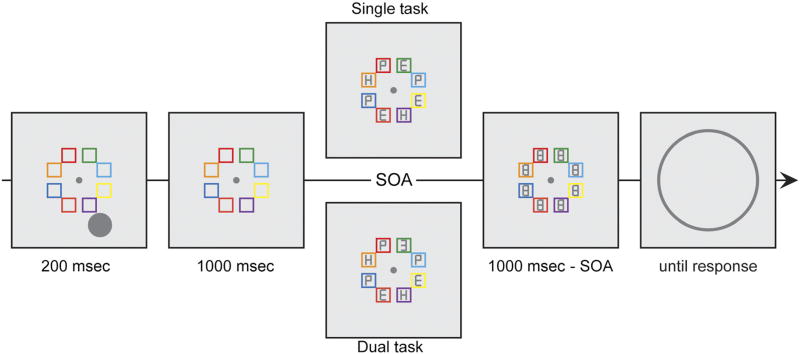Figure 1.
Spatial WM task: In both conditions, participants had to remember the location of gray circle while maintaining fixation. After a delay, observers reported the angular location of this circle by clicking on the perimeter of a rim. Before giving the response, in the dual-task condition, observers performed a spatial attention task in which they indicated the digit (2, 3, or 5) that was presented in one of the colored boxes. Participants were told which colored box would contain a digit; the color remained fixed throughout the experiment and had a validity of 87.5%. Participants had 1000 msec to respond, but the displays were masked after a predefined SOA, which was determined offline for each participant. Displays in the single-task conditions were identical, but observers were instructed to ignore the displays associated with the intermediate task. Single- and dual-task conditions were blocked.

